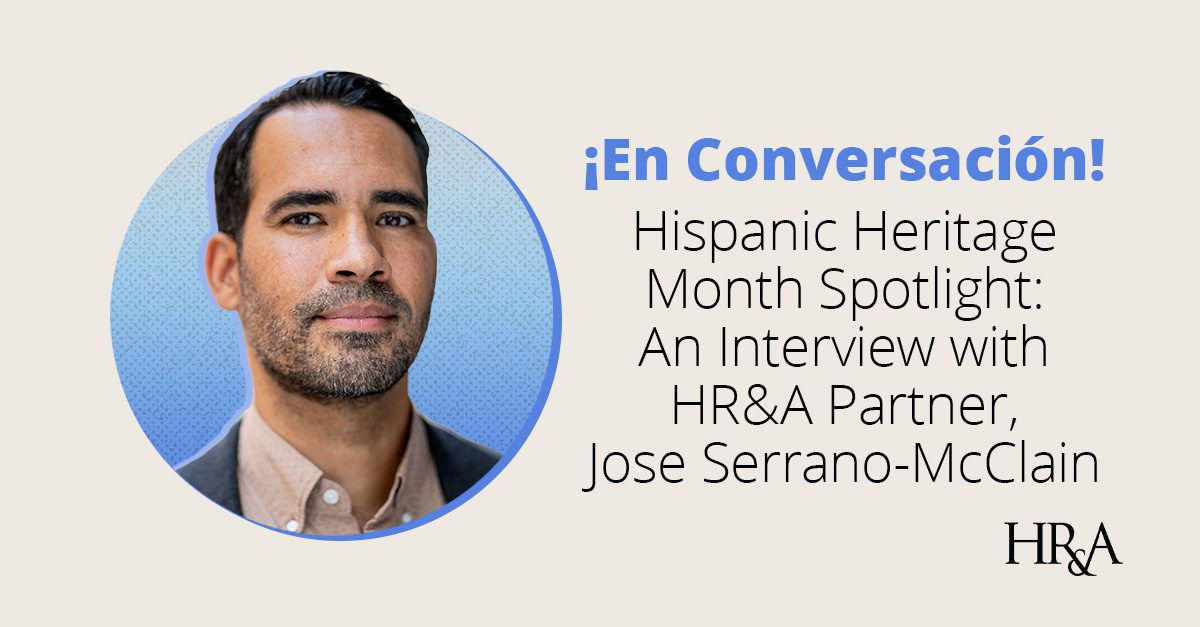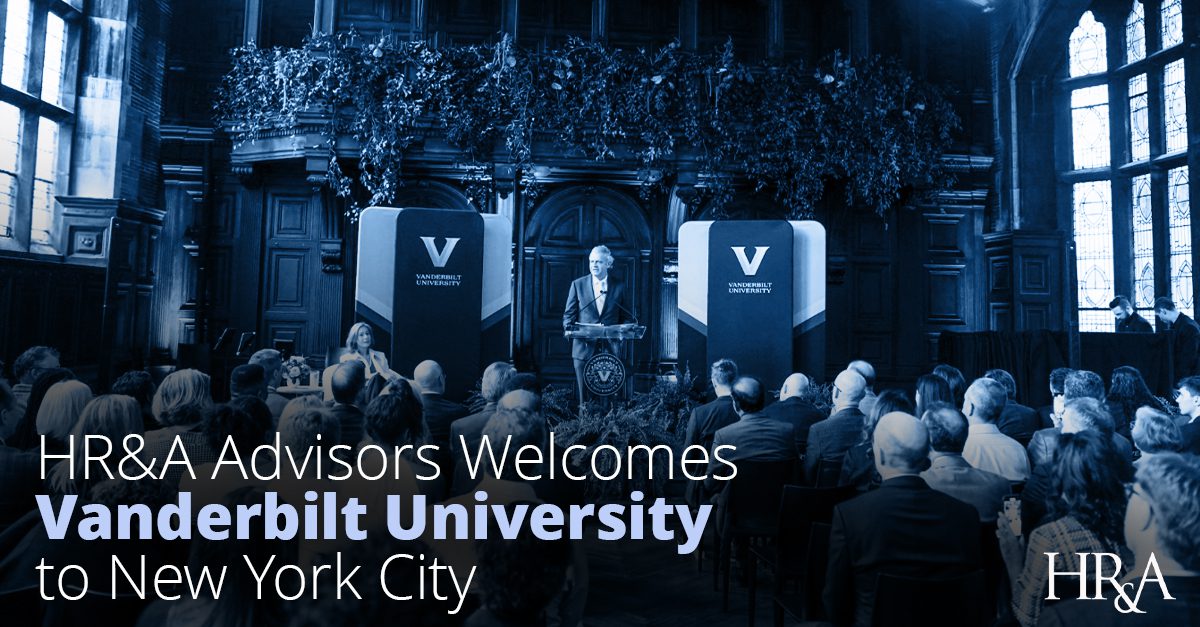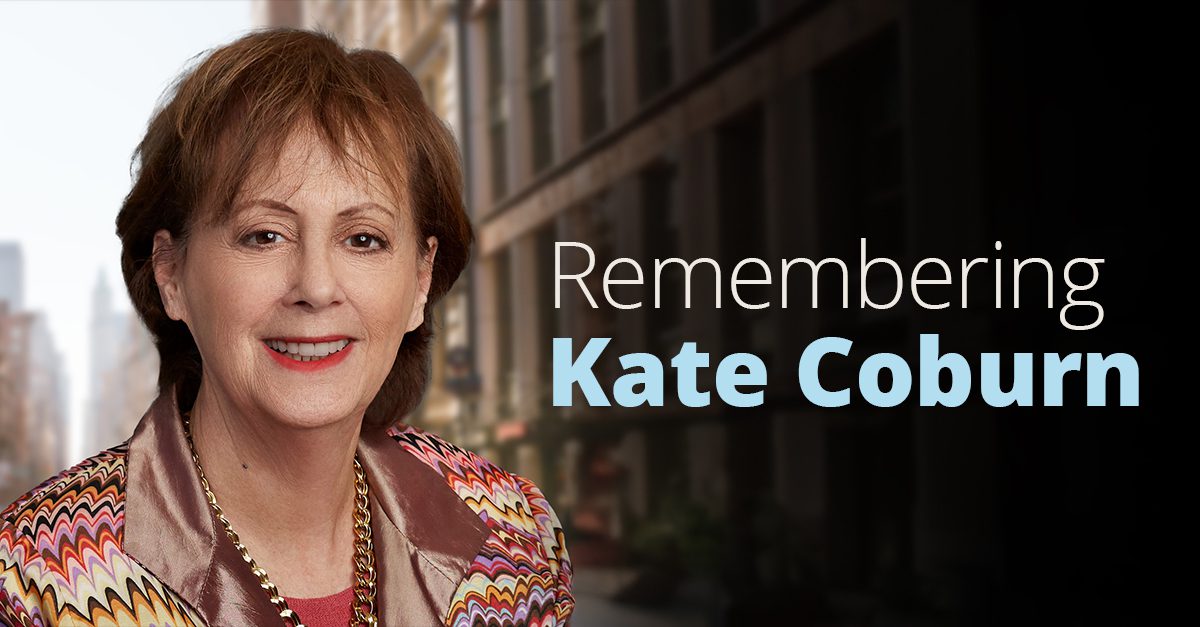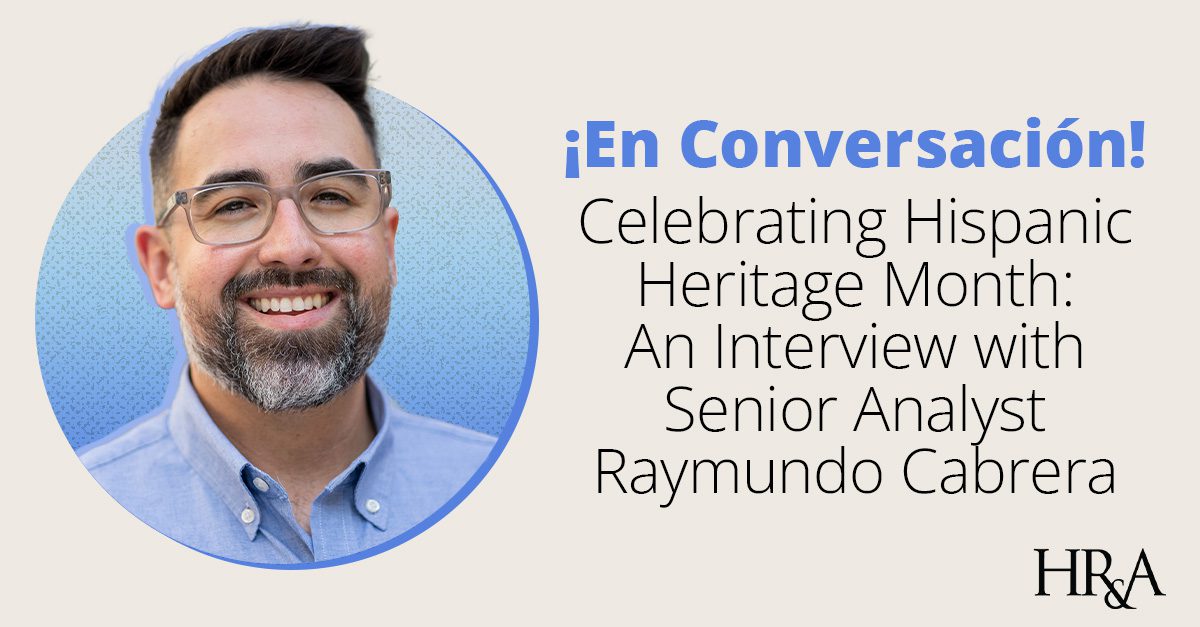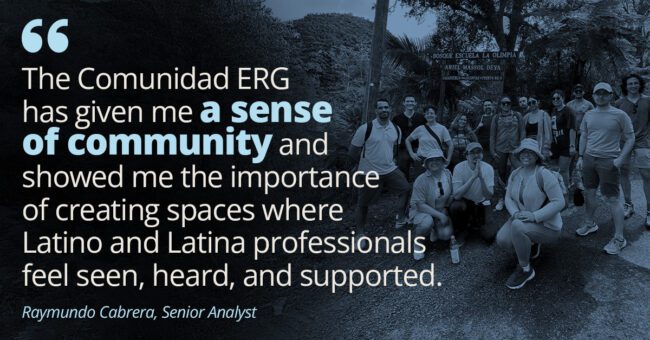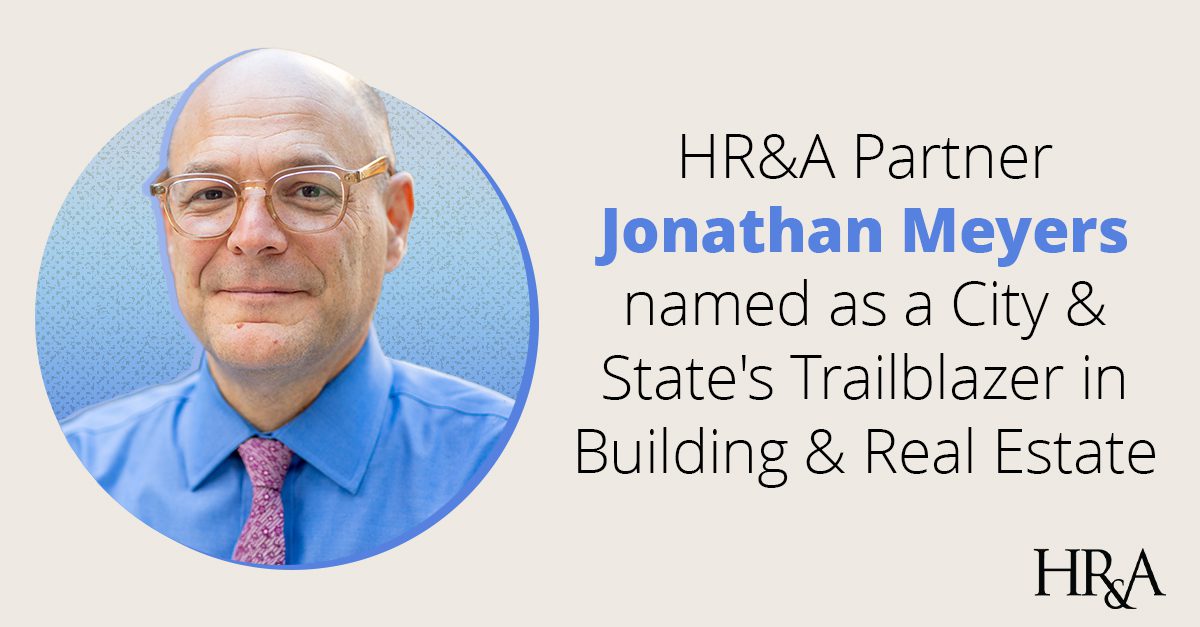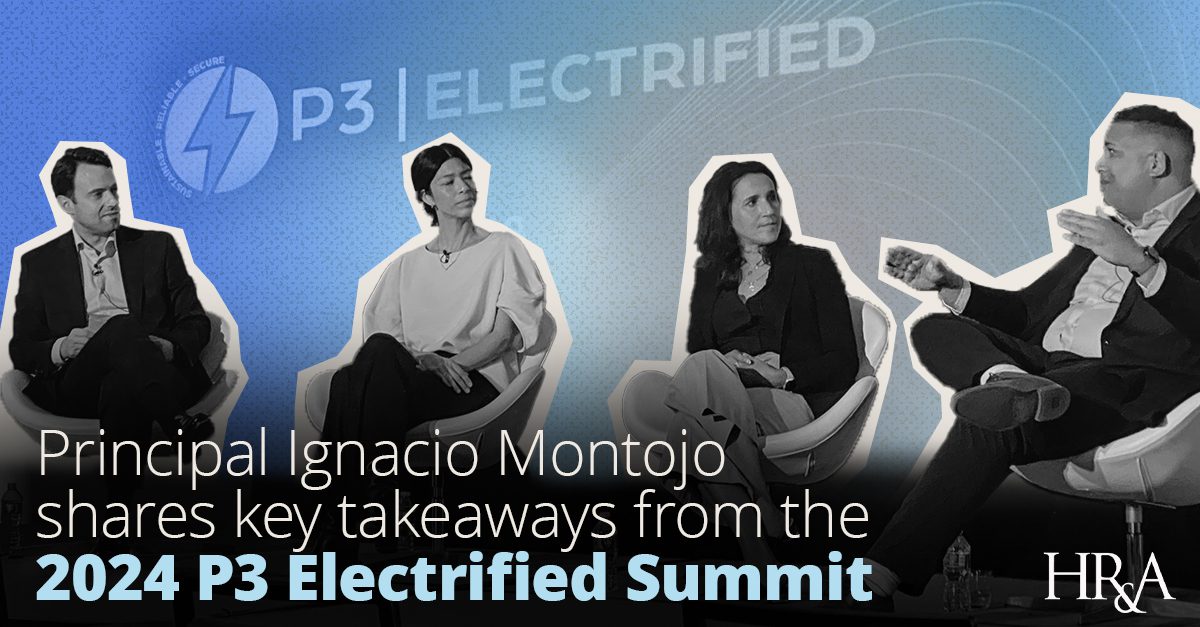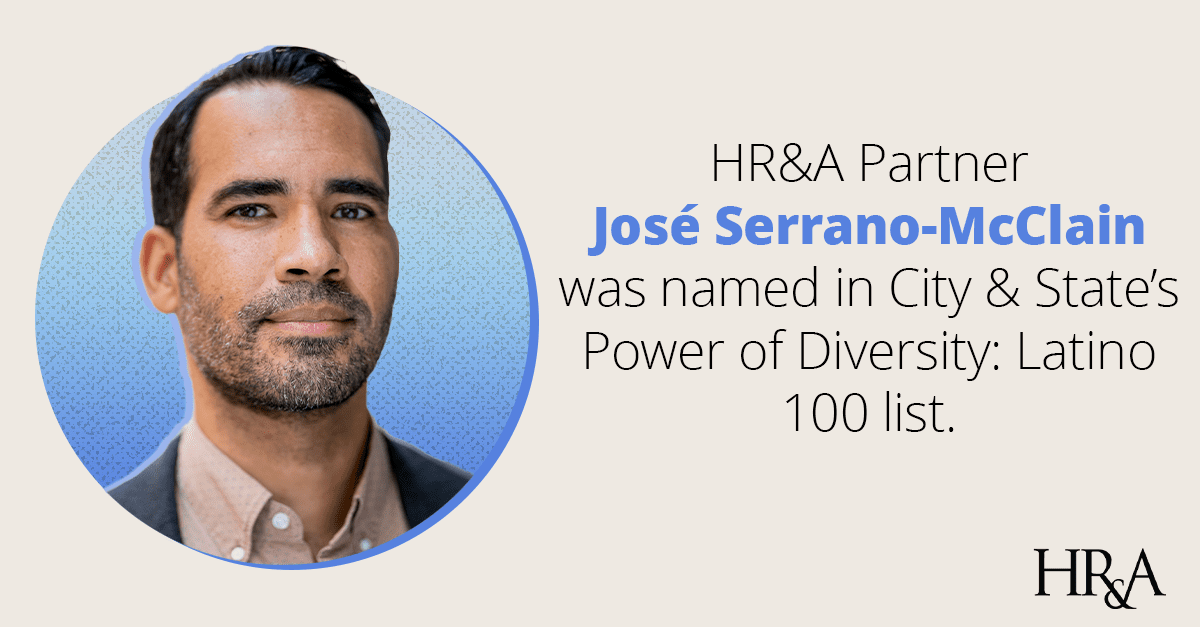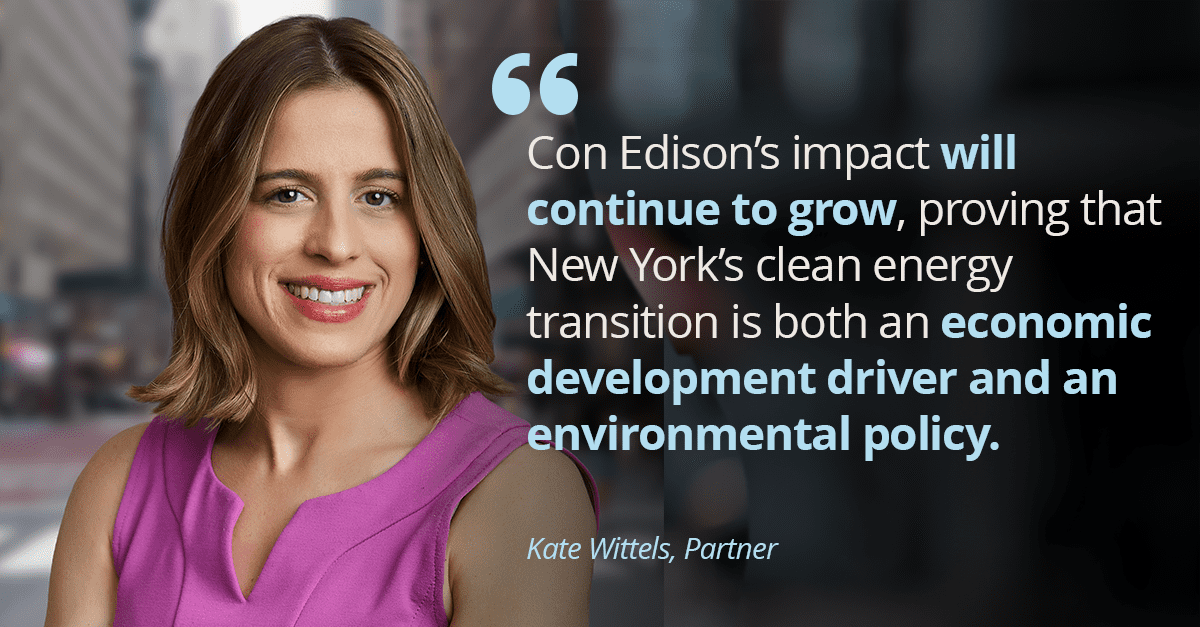As we celebrate Hispanic Heritage Month, we’re taking a moment to reflect on the experiences and perspectives of Hispanic and Latinx HR&Aers to learn more about how their identities have helped shape their approach to their work. We sat down with Partner Jose Serrano-McClain, whose practice spans government innovation, economic development, climate, culture, and technology policy. Jose’s background as an immigrant from the Dominican Republic has helped inform his inclusive approach to leadership, innovative problem-solving, and community advocacy.
How has your background influenced your approach to leadership and problem-solving in your work?
I immigrated to the U.S. from the Dominican Republic when I was in primary school. That experience shaped me in significant ways—particularly in terms of observation and adaptation. At a young age, you learn how to navigate different environments, and that kind of ‘code-switching’ has become a key part of my professional trajectory. I’ve always had a drive to enter new spaces and challenge myself to adapt.

I started at the Federal Reserve, transitioned into documentary filmmaking, launched a startup, organized immigrant communities in Queens, and worked for city government. This diversity of experiences helped me develop a unique approach to leadership and consulting. I thrive on immersing myself in new environments and helping others navigate them too. At HR&A, this has allowed me to connect deeply with various communities and industries.
You’ve worked in many different sectors. What have been some of the most rewarding aspects of your work at HR&A? Are there emerging issues or communities that need more attention?
One of the most rewarding aspects of our work is engaging with communities that reflect my own — people who remind me of my aunts, uncles, and cousins. We often convene spaces where every day, working folks can share their ideas and insights. It’s in these settings, like focus groups or roundtables, where we truly listen to communities’ needs and concerns.
For example, I worked on a project with the San Francisco Health Plan, where we conducted focus groups with Latino members. These Spanish-language conversations allowed us to build trust and gather valuable insights. The outcome was not just about fulfilling a project requirement — it was about ensuring these communities had a real impact on policy decisions.
At HR&A, we’re also involved in significant projects that deal with environmental justice. For instance, we’re leading a community planning process in Queens, where the city’s largest power plant will transition into a renewable energy hub. This neighborhood, known as “Asthma Alley,” is predominantly Latino and African American and has faced environmental injustices for decades. Our work is focused on ensuring that the transition to green energy benefits these communities, not just economically, but in terms of health and employment opportunities as well.
What does it mean to you to receive industry recognition like City & State’s Power of Diversity: Latino 100 list?
Honestly, awards aren’t something that’s ever been a huge driver for me, but I do recognize the importance of visibility. Being on City & State’s Power of Diversity: Latino 100 listis a reminder that our work is being noticed and appreciated, and it provides an incredible opportunity to connect with other Latino leaders in New York. That’s what excites me the most — being able to collaborate with others who are also committed to advancing Latino leadership in various sectors.

I thrive on collaboration, and I believe that when we bring together diverse voices from the Latino community, we can make a much greater impact. Whether it’s in urban planning, consulting, or community development, I want to continue to elevate our community’s role in shaping the future of cities.
How do you foster the next generation of Latino professionals at HR&A?
We’ve been putting in really strong building blocks here with the Comunidad ERG (Employee Resource Group), which has been one of my favorite spaces at this company. Honestly, it’s been amazing to see how we’ve been able to come together and connect — especially during big events like our first Firmwide Summit last year. I really believe we have the potential to build on that momentum and create even stronger mentorship and support systems for our young Latino leaders here at HR&A.
For me, mentorship is essential. But beyond traditional mentorship, I think it’s important to ask ourselves some deeper questions:
- How are we ensuring that we don’t flatten or oversimplify our understanding of who’s within our Latino community?
- How do we bring our diverse personal experiences to the table?
- How do we make space for younger professionals to do the same?

We’ve made it a point to bring these conversations into our project work, ensuring the lived experiences of team members from underrepresented communities shape our strategies in those communities. Beyond mentorship, we’re building a sponsorship model to connect young Latino professionals with others inside and outside HR&A. For example, our visit to El Puente, a human rights institution in NYC, was a great opportunity to foster connections with Latinx organizers that are enriching our team’s understanding of what leadership can look like.
